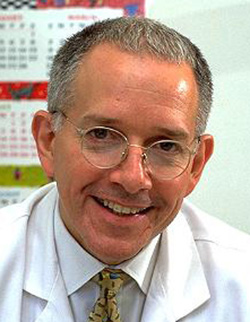Thanking Dancers for the Essence of My Career
Advice to improve your movement, fitness, and overall health from the world's #1 in orthopedics.

Four and a half decades ago seems like yesterday when my first ballerina patient took off her shoes. I looked forward to her appointment all week, but these weren’t feet. They were gnarled, sinewy wedges, with bumps and tendons sticking out all over the place. I almost changed careers and hung up my scalpels to buy a deli. They were unlike any of the 5,000 feet I’d already doctored. With reverence I soon realized that in my presence were not simply feet, but world-class, painstakingly and precisely adapted instruments of dance.
The appearance of these feet is de-riguer for a dancer, a visage earned after thousands of hours of dance. Without this adaptation, an injury is significantly more likely. Injuries stem from a disruption of the equilibrium between the sustaining ability of tissues and the challenges of a particular activity. Bones, joints, muscles and ligaments must get bigger and thicker during learning years to protect themselves. Those who try to dance too aggressively without adapted feet will more likely sustain injury.
Which brings up an unfortunate marker in the present times. We are all living through the pandemic. During the shutdown, many dancers were able to shed much of the chronic injury they’d carried along from season to season, as they finally had time to adequately rest and perhaps do therapy. On the other hand, all but a lucky few could maintain their extreme high level of adaptation maintained by near-constant dance with typically but a few short breaks from class. Dancers de-adapted, not having good floors to dance on. No large spaces to do turns, tours, or sweeping, intricate movements, and certainly no opportunities to dance in an ensemble. Thus, those who returned to dance after the shut downs found themselves at risk of new injury. If you’ve recently had COVID or another virus known to cause weakness, take it easy at first going back to class. Some of my patients returned from their illnesses too aggressively and incurred significant injury due to the dancer’s enemy, fatigue.
Of the professional dancers I’ve treated who’ve been given the opportunity to return to performance when theatres reopened, at least 50% of them incurred injuries not typically seen in seasoned professionals, but more often seen in dance newbies...stress fractures in the heel or ankle due to weakness in the muscles which slow down landing, tendon or ligament tears in the ankle or midfoot due to weakness or balance deficit in the foot or ankle muscles, or painful multiple ulcers between the toes as their feet had subtly enlarged and no longer fit their pointe shoes, just to name a few. And most of these injuries were accompanied by greater additional psychological trauma from the acute disappointment of still not being able to return to dance.
With all this, we can’t help but regard each dancer who comes in, as a little deity, because treating dancers makes us not only better doctors, but better people. It doesn’t matter if you’ve won a big competition, if you’re in a major company, a pick-up group, or if you just started to dance for your personal passion. I can tell if you’ve dedicated your life to dance. And I my life to you.
The goal of the health professionals at Hospital for Special Surgery’s Performing Arts Medicine Collaborative is to help our patients maintain a safe, satisfying and reasonably accelerating equilibrium. When we treat you, we are inspired by your professionalism. We must stay sharply focused. We must nail the diagnosis. We must determine the underlying cause of your problem. So we know about choreography, floors, teachers, repertoire, dance terms and elements of a dance class, and what it’s like for a dancer to be in a company or a show. We have to get you returned, healed as quickly as possible, and in better shape than before the injury. We have to read about dancers’ health, attend conferences of dance medicine professionals, attend performances, watch classes, maybe even go backstage, watch rehearsals, and perhaps take dance classes ourselves. We are here to find you the best physicians, physical therapists, teachers, Pilates instructors, and dance rehab coaches. We can help you with diet, finding an acupuncturist or psychological counsel. We are armed with all sorts of other doctors of varied specialties to put together your best team.
I’ve been applying what I learned from treating dancers to my regular-patient population for all these decades. So on behalf of my non-dance patients as well as myself, I thank each dancer who’s trusted my care. I look forward to welcoming you to HSS, where we shall provide you devoted, world-class attention from specialists who have dedicated their careers to serving yours.
Published 1/26/2022




